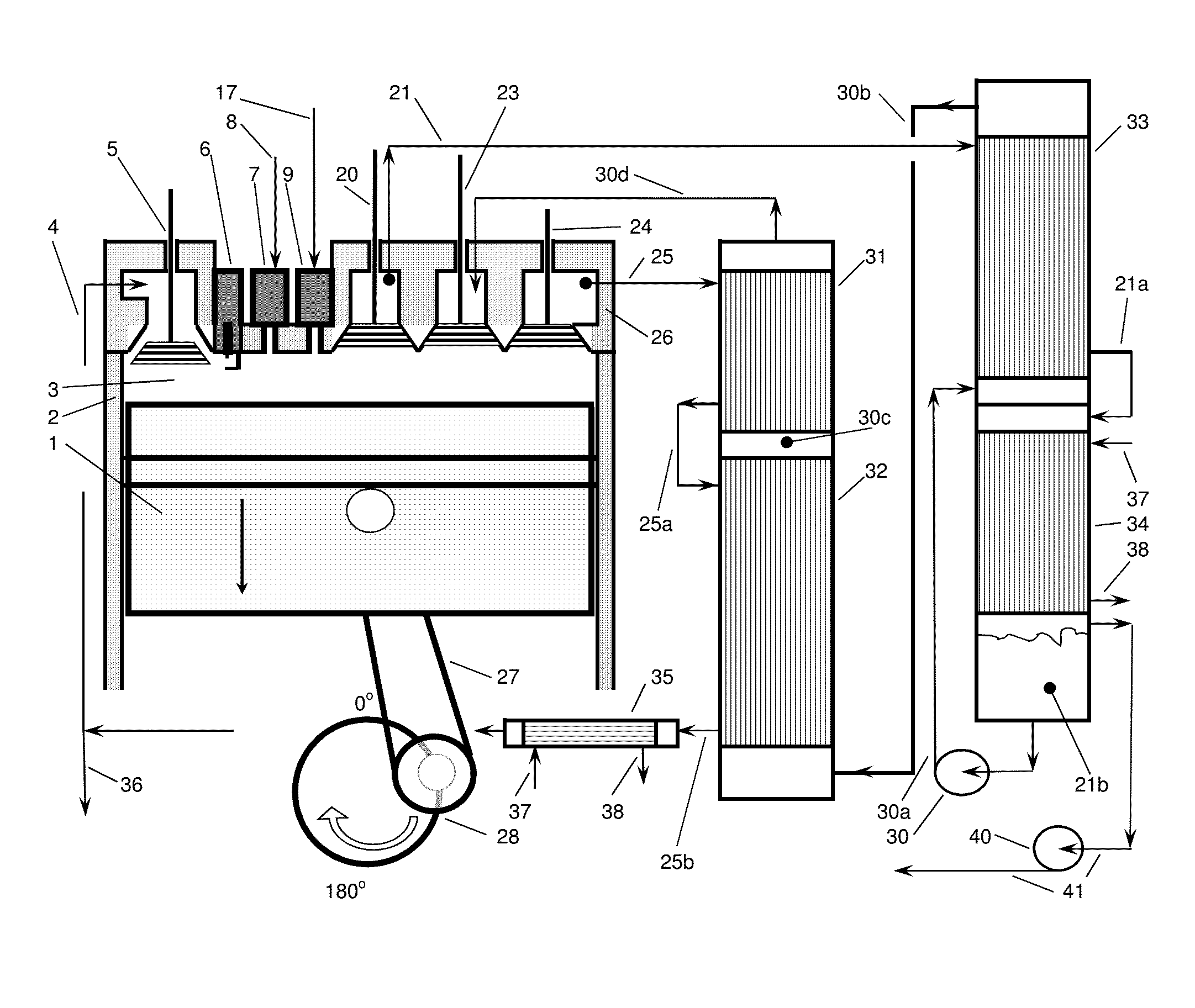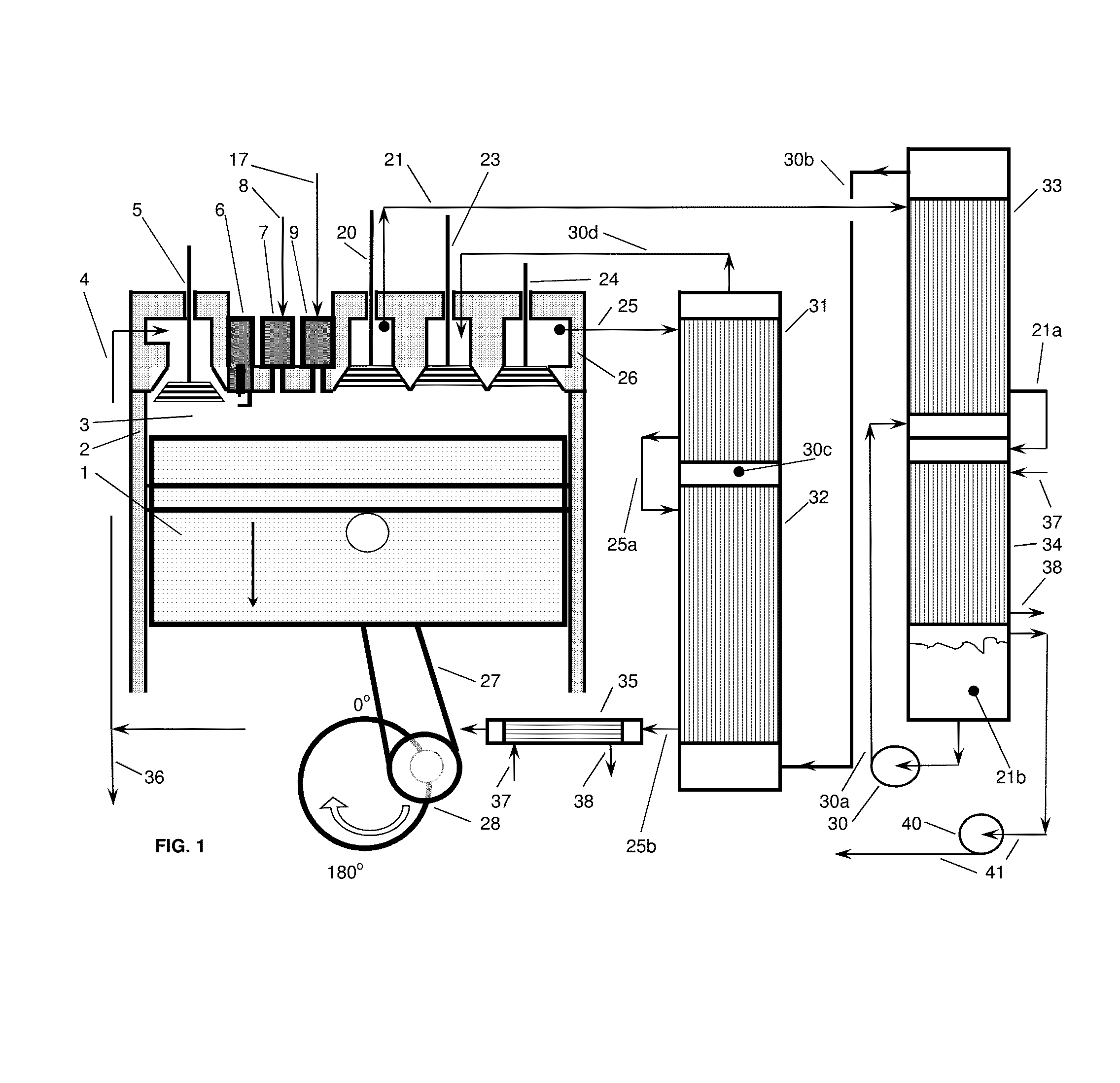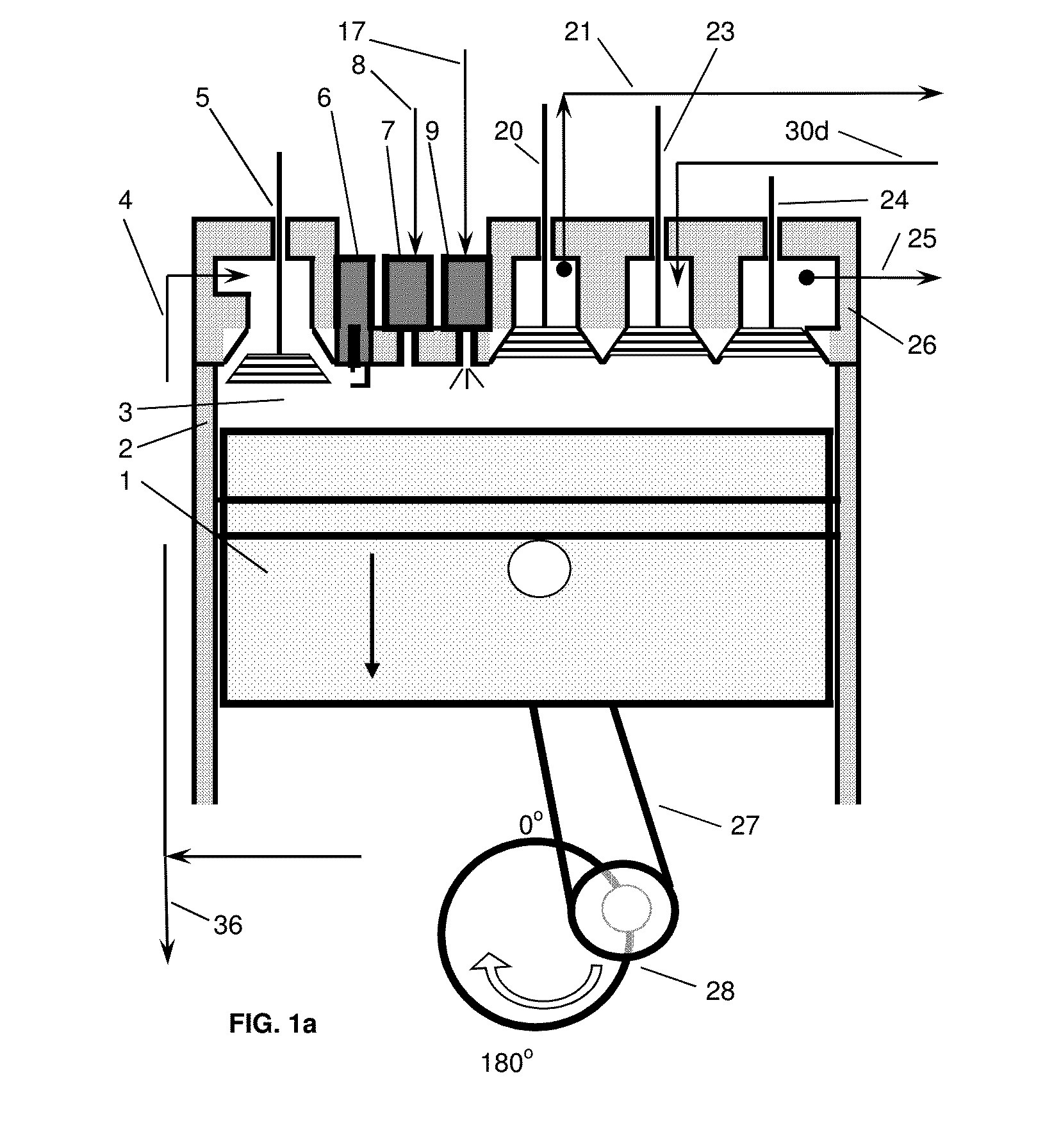High Thermal Efficiency Six Stroke Internal Combustion Engine with Heat Recovery
a heat recovery and internal combustion engine technology, applied in the field of internal combustion engine recuperation, can solve problems such as quiet engines, and achieve the effects of reducing heat loss, high efficiency, and increasing the work output of the engin
- Summary
- Abstract
- Description
- Claims
- Application Information
AI Technical Summary
Benefits of technology
Problems solved by technology
Method used
Image
Examples
Embodiment Construction
[0073]For simplicity in describing this invention, the figures illustrate only one piston inside one cylinder attached to one crankshaft. This invention may use any number of cylinders and pistons as well as multiple crankshafts. The figures are illustrative and are not drawn to scale but schematically depict this engine and the method of operating this engine. This engine may be either spark ignited (SI), compression ignited (CI), combination of SI and CI, or utilize some other means of igniting the combustible mixture. The fuels to be used in this engine include all hydrocarbons, coal dissolved in hydrocarbons with the ash removed, as well as hydrogen or mixtures thereof. It is understood that cylinder 2; cylinder head 26; connecting conduits 4, 17, 21, 21a, 25, 25a, 25b, 30a, 30b, 30c, and 30d; pump 30; and heat exchangers 31, 32, 33, 34 and 35 are all insulated to retain heat. This insulation will also absorb noise resulting in a quiet engine. This insulation is not shown for cl...
PUM
 Login to View More
Login to View More Abstract
Description
Claims
Application Information
 Login to View More
Login to View More - R&D
- Intellectual Property
- Life Sciences
- Materials
- Tech Scout
- Unparalleled Data Quality
- Higher Quality Content
- 60% Fewer Hallucinations
Browse by: Latest US Patents, China's latest patents, Technical Efficacy Thesaurus, Application Domain, Technology Topic, Popular Technical Reports.
© 2025 PatSnap. All rights reserved.Legal|Privacy policy|Modern Slavery Act Transparency Statement|Sitemap|About US| Contact US: help@patsnap.com



